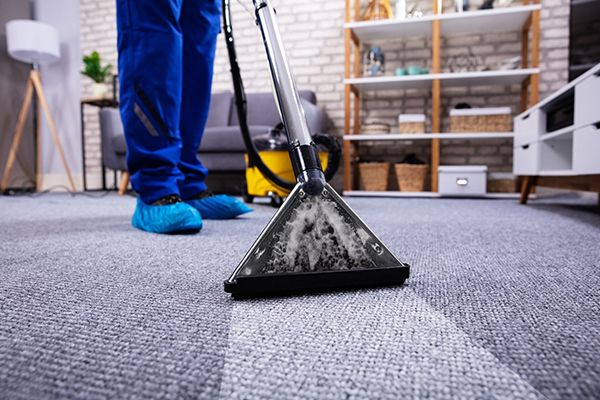The rear suspension system of a vehicle is a critical component that affects ride comfort, handling, and stability. Comprising various components working together, the rear suspension system plays a crucial role in supporting the vehicle’s weight, absorbing road shocks, and maintaining tire traction. For comprehensive coverage and peace of mind, consider an extended car warranty for American manufacturers to get extended car warranty for american manufacturers.
I. Introduction
A. Importance of Rear Suspension System
The rear suspension system is essential for providing a smooth and comfortable ride, ensuring stability during cornering, and maintaining traction on uneven road surfaces.
B. Key Components of Rear Suspension
Key components of the rear suspension system include springs, shock absorbers, control arms, and sway bars, each contributing to the system’s overall performance and functionality.
C. Benefits of Extended Car Warranty for American Manufacturers
An extended car warranty for American manufacturers provides coverage for unexpected repairs and maintenance costs associated with rear suspension components, offering peace of mind and financial protection for vehicle owners.
II. Types of Rear Suspension Systems
A. Independent Rear Suspension
- Description and Functionality
Independent rear suspension allows each wheel to move independently, providing a smoother ride and improved handling characteristics.
- Advantages and Disadvantages
Independent rear suspension offers superior ride comfort, enhanced stability, and better handling compared to other suspension types. However, it may be more complex and costly to maintain.
- Examples of Vehicles with Independent Rear Suspension
Many modern vehicles, including luxury sedans, sports cars, and SUVs, utilize independent rear suspension for superior ride quality and handling performance.
B. Solid Rear Axle Suspension
- Description and Functionality
Solid rear axle suspension connects both rear wheels to a single axle, providing robust construction and durability, making it suitable for heavy-duty applications.
- Advantages and Disadvantages
Solid rear axle suspension is simpler and more rugged than independent systems, making it ideal for trucks, SUVs, and off-road vehicles. However, it may sacrifice ride comfort and handling precision.
- Examples of Vehicles with Solid Rear Axle Suspension
Trucks, SUVs, and some older model vehicles may feature solid rear axle suspension for their durability, towing capacity, and off-road performance.
C. Multi-Link Rear Suspension
- Description and Functionality
Multi-link rear suspension uses multiple control arms and links to control wheel movement, providing a balance between ride comfort and handling performance.
- Advantages and Disadvantages
Multi-link rear suspension offers a compromise between independent and solid axle systems, providing good ride quality, handling stability, and packaging efficiency.
- Applications in Modern Automotive Design
Many midsize and luxury vehicles utilize multi-link rear suspension for its combination of comfort, performance, and space-saving design.
III. Components of Rear Suspension System
A. Springs
- Types of Springs Used in Rear Suspension
Common types of springs used in rear suspension include coil springs, leaf springs, and air springs, each offering specific advantages in terms of ride comfort, load-carrying capacity, and adjustability.
- Functionality and Role in Suspension System
Springs support the weight of the vehicle, absorb road shocks, and maintain ride height, ensuring optimal suspension performance and comfort.
- Maintenance and Replacement Considerations
Regular inspection and maintenance of springs, including cleaning, lubrication, and replacement as needed, are essential to ensure proper suspension operation and longevity.
B. Shock Absorbers
- Purpose of Shock Absorbers in Rear Suspension
Shock absorbers dampen suspension movement, controlling the oscillation of springs and maintaining tire contact with the road surface for optimal grip and stability.
- Types of Shock Absorbers
Shock absorbers may be classified as twin-tube, monotube, or adaptive dampers, each offering specific advantages in terms of performance, durability, and adjustability.
- Signs of Shock Absorber Wear and Replacement Guidelines
Common signs of shock absorber wear include excessive bouncing, body roll, and uneven tire wear. Timely replacement of worn shock absorbers is essential to restore ride comfort and handling precision.
C. Control Arms
- Role of Control Arms in Rear Suspension
Control arms connect the suspension components to the vehicle’s chassis, controlling wheel movement and alignment for optimal ride and handling characteristics.
- Types of Control Arms
Control arms may be classified as upper and lower control arms, each serving specific functions and configurations depending on the vehicle’s suspension design.
- Importance of Proper Alignment and Maintenance
Proper alignment and maintenance of control arms are essential to ensure optimal suspension geometry, tire wear patterns, and handling performance for safe and comfortable driving.
IV. Common Rear Suspension Issues
A. Sagging Suspension
- Causes of Sagging Suspension
Sagging suspension may result from worn springs, damaged shock absorbers, or excessive vehicle load, affecting ride height and handling stability.
- Diagnostic Techniques for Identifying Sagging Suspension
Diagnostic techniques such as visual inspection, suspension bounce test, and load testing can help identify sagging suspension issues and determine the root cause for effective repair and maintenance.
- Repair and Maintenance Solutions
Repair and maintenance solutions for sagging suspension may include spring replacement, shock absorber upgrade, and suspension reinforcement to restore ride height and handling performance.
B. Uneven Tire Wear
- Factors Contributing to Uneven Tire Wear in Rear Suspension
Uneven tire wear may result from misalignment, improper tire inflation, worn suspension components, or aggressive driving habits, affecting tire performance and longevity.
- Importance of Wheel Alignment and Balancing
Proper wheel alignment and balancing are essential to ensure uniform tire wear, optimal handling, and safety. Regular alignment checks and adjustments help maximize tire lifespan and performance.
- Addressing Uneven Tire Wear Through Suspension Adjustment
Suspension adjustment, including camber, caster, and toe settings, can help correct uneven tire wear patterns and restore proper alignment for improved ride comfort and handling stability.
C. Noise and Vibrations
- Common Causes of Noise and Vibrations in Rear Suspension
Noise and vibrations in rear suspension may result from worn bushings, loose components, or damaged shock absorbers, affecting ride comfort and handling stability.
- Diagnostic Approaches for Identifying Noise and Vibrations
Diagnostic approaches such as road testing, chassis dynamometer testing, and suspension component inspection can help identify the source of noise and vibrations for effective repair and maintenance.
- Solutions for Noise and Vibration Reduction
Solutions for noise and vibration reduction in rear suspension may include bushing replacement, component tightening, and shock absorber upgrade to restore ride comfort and handling precision.
V. Maintenance Tips for Rear Suspension System
A. Regular Inspection Schedule
- Visual Inspection of Rear Suspension Components
Regular visual inspection of rear suspension components, including springs, shock absorbers, and control arms, helps detect signs of wear, damage, or misalignment for timely repair and maintenance.
- Diagnostic Tools and Techniques for Detailed Assessment
Diagnostic tools such as suspension analyzers, wheel alignment machines, and chassis dynamometers provide detailed assessments of rear suspension performance and alignment for accurate diagnosis and adjustment.
- Recommended Maintenance Intervals for Various Components
Recommended maintenance intervals for various rear suspension components, including springs, shock absorbers, and control arms, vary depending on vehicle usage, driving conditions, and manufacturer recommendations.
B. Lubrication and Greasing
- Importance of Proper Lubrication in Rear Suspension
Proper lubrication of rear suspension components, including control arm bushings, shock absorber mounts, and sway bar links, reduces friction, wear, and noise, ensuring smooth operation and longevity.
- Types of Lubricants Used in Suspension Maintenance
Silicone-based lubricants, lithium grease, and molybdenum disulfide grease are commonly used in rear suspension maintenance to provide lubrication, corrosion protection, and temperature resistance.
- Guidelines for Greasing Suspension Joints and Bushings
Guidelines for greasing suspension joints and bushings include cleaning surfaces, applying grease evenly, and avoiding over-lubrication to prevent contamination and excessive buildup.
C. Professional Alignment and Suspension Services
- Benefits of Professional Wheel Alignment
Professional wheel alignment services ensure proper tire contact, even tire wear, and optimal handling characteristics, enhancing vehicle safety, comfort, and fuel efficiency.
- Suspension Tuning Services for Optimal Performance
Suspension tuning services, including shock absorber adjustments, sway bar upgrades, and alignment optimization, can improve handling performance, responsiveness, and overall driving enjoyment.
- Importance of Extended Car Warranty for American Manufacturers
Choosing an extended car warranty for American manufacturers provides peace of mind, financial security, and comprehensive coverage against unexpected repairs and maintenance costs for the rear suspension system and other critical components.
In conclusion, the rear suspension system is a critical component of every vehicle, contributing to ride comfort, handling stability, and safety. Understanding the types of rear suspension systems, components, common issues, and maintenance tips is essential for ensuring optimal performance, longevity, and safety. For comprehensive coverage and peace of mind, choose an extended car warranty for American manufacturers to protect your vehicle’s rear suspension system and other critical components against unexpected repairs and maintenance costs.





